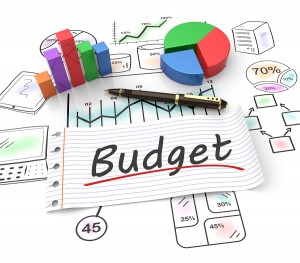Every fall, the word begins to crop up with increasing frequency in work conversations. Budgets. Budgeting. If you are like a lot of people, you may cringe at the mere mention. After all, this is a business, let’s get to the real work, not these endless sheets of paper crammed with numbers, right?
Nope. If that’s what you think, I’m here to help. Want to know a secret? Budgets are living documents and will serve as the backbone of your business. The budget will show you where the company has been, where it is now and where it is headed. Without a budget, you might as well be adrift at sea. You will not be able to anticipate problems, correct a mistake mid-course or chart a course for business growth. Your budget is your business plan. It’s the blueprint to where your company has been over time and where it is going in the future.

And yet people are still afraid of budgets. My theory is that people don’t fear budgets, they fear accountability. People are afraid of being measured and that is exactly what budgets do— they measure performance. When you create a budget, you estimate what is going to happen and as the budget year progresses you see what actually happens. People should not fear the budgeting process if they have a solid business strategy and methodology to support the numbers. A budget allows managers to make assumptions about their businesses and then validates those assumptions.
October is the ideal time to begin your next year’s budgeting process. When I request budgets from my department heads here at CMA, I don’t just want an Excel spreadsheet filled with numbers. I also require a written narrative and that is typically more important than the numbers. I want to know where each department head sees his or her business unit headed during the next 12 months. What assumptions will they make about revenue and expenses? If they anticipate an increase in expenses, there should be a corresponding expectation of additional revenue and a plan of how they plan to achieve that goal. When a budget is complete, it will serve as a blueprint for your business activities during each of the next four quarters. And the budget creates accountability as everyone works to achieve the agreed upon goals.
To be clear, budgets don’t always go according to plan. In fact, budgets are more art than science. Your company’s health insurance costs might be steeper than anticipated. An employee’s computer might unexpectedly need to be replaced. These things happen. Just remember that budgets are not meant to be created and then ignored for the next year. You should always have a rolling budget forecast showing where you think your budget is going based on certain assumptions. If reality changes those numbers — and it will — you should adjust your rolling budget forecast. I expect my department heads to follow, manage and adjust their budgets accordingly throughout the year.
If you are about to embark on your first business budgeting process, gather as much information as you can. To help you get started, here are some of the basics you will need to know:
- The Budget Formula. Sales – Total Cost = Profit
- Sales and Revenue. Use last year’s actual sales as a base, but if this is your first year, research other businesses in the same field to get a sense of what numbers to use. Be cognizant of things that may affect sales— the economic forecast or the loss of a big customer.
- Costs and Expenses. There will be three categories of costs: fixed, variable and semi-variable. Fixed costs will stay the same regardless of your sales throughout the year. You will probably know your fixed costs in advance. They include items like rent, leases and insurance premiums. Variable costs will rise and fall depending on your sales volume and include items like raw materials, inventory and shipping. The final category, semi-variable costs, are those that may change as your business volumes rise and fall. Semi-variable costs include salaries, advertising and telecommunications.
- Profits. Anticipate a profit margin that is in line with other businesses in your industry. Once you calculate sales and expenses, you’ll need to see if that leaves you with a profit margin that is in line with your expectations. If you come up short, consider ways to increase sales or decrease expenses. Having an accurate estimate of profits will help you make long-range plans, be it hiring additional employees, buying new equipment or moving to a larger location.
Once you have the data you need, go ahead and create both your budget and your written backup explaining your assumptions and plans for the next 12 months. Remember that your numbers are meant to support your business plan. For example, if you believe your department is understaffed, there should be revenue growth to support your claim.
Most importantly, do not be afraid of budgets. Sure, they can be daunting at first and time-consuming, but creating a budget is essential. If you don’t know the hard data of where your business has been, it will be virtually impossible to map out a useful, strategic plan of where your business is headed. A budget will keep you on track and help you achieve your goals.
Onward!
Jeffrey Barnhart is founder and CEO of Creative Marketing Alliance, a full-service marketing communications firm that helps organizations build reputation, relationships and revenue. He can be reached at jbarnhart@cmasolutions.com.



